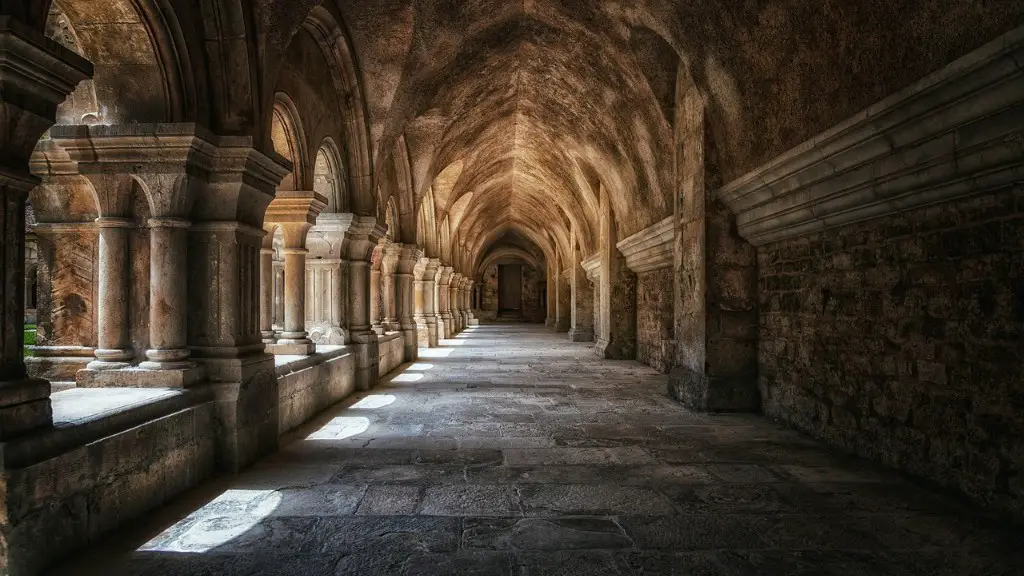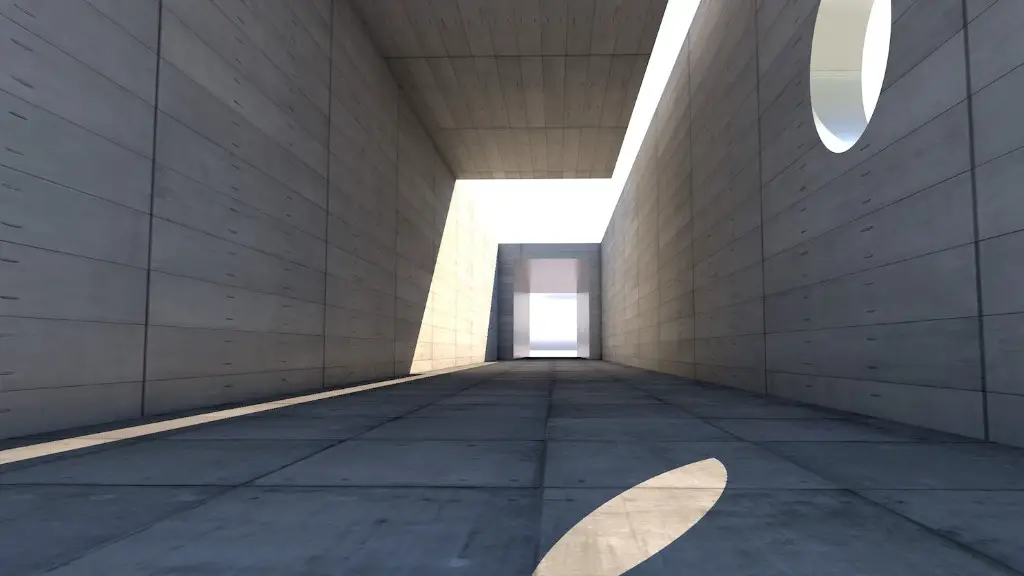What Is Culture In Architecture?
Architecture has been around since ancient times, yet its importance in the modern world remains strong and is ever evolving. The style and choice of materials used to create buildings and structures varies from place to place, but there is one common element that binds them all together, and that is the presence of culture. Culture can be defined as a shared way of life that defines the daily life of a society, including the customs, language, beliefs, values, arts, literature, and even dress styles. Architecture is increasingly being recognized as an important part of this culture.
When considering the impact of culture in architecture, it’s important to consider the historical and social influences that have shaped it. Historically, architecture has been used to express the values and beliefs of a culture or group. For example, in many Asian cultures, the architecture often has strong spiritual associations, expressing the importance of the spiritual realm in the lives of the people. In Westernized countries, the focus may be more on functionality, utility, and beauty.
Additionally, the role of cultural identity cannot be ignored when looking at architecture. Buildings and structures can be used to reflect shared values and beliefs of a particular group or culture. For example, the design of buildings, ornaments, or monuments in a particular city, state or country may reflect that group’s identity, providing a sense of community and belonging. In many cases, this identity has been passed down through generations, solidifying a shared history of a particular place or region.
Architecture can also be used to express the particular sensibilities of a certain culture. This includes the choice of materials used, such as wood, stone, marble, or other materials that are associated with a particular area. In addition, decoration, symbols, and forms can be used to create an expression of a certain culture. By carefully considering these details, architects can ensure that their designs will be reflective of the particular culture in which they are being built.
The use of culture in architecture can also be used for both practical and aesthetic reasons. Practically, it can be used to provide a sense of familiarity for those visiting or living in the area. This can have a positive impact on tourism, as people are likely to be attracted to places that look and feel familiar to them. Aesthetically, the use of cultural elements can create a unique look and feel that is reflective of the area. This can be an important tool in giving an area its own unique identity.
In conclusion, it is clear that culture has an important role to play in architecture. Its influence can be seen in the choice of materials, symbols, and forms used. Its importance lies in the shared identity and values it reflects to both those visiting the area or living in it. By carefully considering how culture can be used in their designs, architects can ensure that their buildings and structures will be an expression of the cultures in which they are being built.
Role of Ancient Architecture
Throughout the centuries, architecture has often been used to showcase the values, beliefs, and worldview of a particular society or culture. In many cases, this is more true for ancient societies, as the style of architecture used during these times often had some spiritual significance. This can be seen in the grand temples and statues of ancient Greece and Rome, expressing their view of the gods, or the intricate tombs and pyramids of Egypt, reflecting their belief in the afterlife.
Today, there are also examples of ancient architecture that still stand, allowing us to learn more about the culture that it represents. The city of Petra in Jordan is a great example of this, consisting mainly of structures carved out of the surrounding red cliffs that served as a statement of the local Nabataean culture. In addition, there are many buildings and monuments from the ancient world that serve as reminders of how the people of the time lived, providing us with a unique window into their worldview.
Ancient architecture has also been influential in the modern era. For instance, the Parthenon in Greece is still an iconic structure and a symbol of classical architecture in the West. Furthermore, the Taj Mahal in India continues to be a testament to the cultural importance of love, beauty and eternity. Ancient architecture continues to be admired and studied today, revealing the importance of culture in architecture.
Modern Architecture and Culture
In the modern era, architecture continues to be strongly influenced by culture. This is especially true in larger cities and urban areas, where a variety of different cultures are often represented. People from different backgrounds have influenced the architecture of these cities to create a unique and diverse look. As a result, buildings, ornaments and monuments that were once used to express the values and beliefs of an area are now used to express the values, beliefs and worldview of multiple groups.
In addition, contemporary architecture has also been impacted by modern trends in culture. This includes the emphasis on creating ‘green’ buildings that are more efficient and sustainable. This can be seen in the use of renewable materials, energy-saving features, and the use of natural air-conditioning. Another example is the preference for modern or ‘cutting-edge’ designs, which are often chosen by architects to appeal to younger generations.
The influence of technology has also had an effect on modern architecture. Technology has enabled designers to experiment with new materials, such as aluminum and glass, as well as new construction techniques, like prefabrication, that allow for more efficient and sustainable designs. In addition, technology has given architects the ability to create stunning and unique structures, like the Guggenheim Museum in Spain or the Louvre in France.
Overall, while the use of culture in architecture continues to be an important aspect of the field, modern trends are also having an impact. As technology continues to evolve, its influence will likely be felt even more, enabling architects to create even more stunning structures that reflect the beliefs and values of the cultures in which they are being built.
Architecture and Community
The role of architecture in community is often overlooked, yet it plays an important role in fostering a sense of unity and belonging. This can be seen in the use of public art and monuments, as well as local landmarks and parks. These things may not have a direct impact on the way people live, but they can provide an important sense of connection, providing a shared point of reference.
Architecture can also be used to create public spaces that are welcoming and inviting, fostering a sense of community. For instance, the design of public parks or streets can be used to create an environment that is easy to navigate and enjoyable to spend time in, while also providing a place to share experiences and stories.
In addition, architecture can be used to create a unique identity for a particular community. The use of unique materials and forms, such as brightly colored buildings or decorations, can help to create a sense of pride and give locals a sense of ownership. This can in turn lead to an increase in the sense of community, as the shared experience of civic pride can be a unifying factor.
Overall, the use of architecture in community is an important tool in fostering a sense of unity and belonging. By taking the time to consider the impact of architecture on a community, architects can ensure that their designs will be reflective of the particular culture in which they are being built.
Sustainable Design
The challenge posed by rapidly changing technologies and ongoing environmental concerns has made the concept of sustainability in architecture all the more pressing. Sustainable design is a concept that focuses on creating buildings and structures that are both efficient and environmentally friendly. This can include the use of renewable materials, solar panels, or even geothermal energy, which can reduce the environmental impact of a project.
In addition, sustainable design can focus on creating structures that are resilient to extreme climates and weather events. This can include the use of materials that are resistant to floods, wildfires, and high winds. Additionally, this can involve features, such as backup generators or solar panels, to ensure that the building will continue to operate during times of disruption.
Moreover, sustainable design can also focus on creating energy-efficient buildings. This can involve the use of insulation and double glazing, as well as energy-saving technologies, such as LED lighting, to reduce energy usage. This can be a crucial part of creating a sustainable structure, as it can help to reduce the environmental impact of the project.
In conclusion, sustainable design is an important part of creating architecture that is both efficient and environmentally friendly. By carefully considering the use of renewable materials and energy-saving technologies, architects can ensure that their designs will be reflective of the culture in which they are being built, while also helping to protect the environment.
The Impact of Culture on Architecture
When it comes to the impact of culture on architecture, the possibilities are endless. Architects can choose to use materials, shapes, forms, and decorations that are reflective of the culture in which they are being built. Additionally, they can create public spaces that promote a sense of unity and belonging, while also acting as a reflection of the local culture.
Furthermore, the use of culture in architecture can also have an impact on sustainability. By carefully considering the use of renewable materials, energy-saving technologies, and other green solutions, architects can create buildings and structures that are more efficient and environmentally friendly. This can help to reduce the environmental impact of the project, while also creating a unique and visually pleasing design.
Finally, the use of culture in architecture can also be used to provide an identity for a particular area or region. Through the careful use of symbols, forms, and decorations, architects can ensure that their designs will be an expression of the culture in which they are being built. This can help create a sense of pride and ownership among locals, while also providing visitors with a unique window into the local culture.
Overall, the use of culture in architecture is an important tool in giving an area or region its own unique identity. By carefully considering the role of culture in their designs, architects can ensure that their buildings and structures will be an expression of the particular culture in which they are being built.





